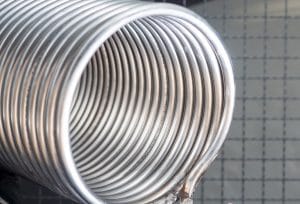 Of the many different options that companies now have for their industrial thermal management needs, ambient cooling (a natural method of preventing electrical overheating) remains one of the more popular methods. Compared to methods such as chilling air with the help of air conditioners or air compressors, the process of ambient cooling is much simpler and more cost-efficient. Yet, it can achieve the same levels of high-performance thermal management, and often higher, without many of the complications and considerations that come with traditional electrical cooling.
Of the many different options that companies now have for their industrial thermal management needs, ambient cooling (a natural method of preventing electrical overheating) remains one of the more popular methods. Compared to methods such as chilling air with the help of air conditioners or air compressors, the process of ambient cooling is much simpler and more cost-efficient. Yet, it can achieve the same levels of high-performance thermal management, and often higher, without many of the complications and considerations that come with traditional electrical cooling.
The meaning of ambient cooling
Ambient cooling describes cooling an electrical enclosure to the point where the temperature inside of it remains at just above the ambient temperature outside of it. This can be achieved in a number of different ways, the simplest being keeping an electrical enclosure open. However, contamination from harmful environmental elements makes that unfeasible. The next best thing is to cool the enclosure with a heat exchanger, which operates by transferring electrical waste heat away from sensitive electrical components and dissipating it elsewhere. This prevents the waste heat from having the chance to raise the temperature inside of the enclosure and the risks of electrical overheating.
Why companies benefit from it
Ambient cooling methods are usually more than adequate for industrial thermal management needs because most common applications have maximum operating temperatures that are far above ambient temperatures. Companies don’t need to chill their electrical enclosures to prevent overheating – just stop the heat from raising the temperature inside of the enclosure. This makes ambient cooling effective, but what makes it efficient is the fact that ambient cooling can be achieved with minimal equipment, minimal energy usage, and minimal requirements for repairs and maintenance. Companies can lower everything from energy costs to unscheduled downtime on their equipment, while boosting the productivity of their technology and employees.
Heat exchangers and optimal ambient cooling
As more companies continue to benefit from ambient cooling methods, the heat exchanger designs that they use continue to evolve for higher-performance thermal management needs. For example, companies can choose designs such as heat pipes or cold plates, according to the specific needs of their applications. In some cases, the technology that powers heat exchangers can also be utilized to provide below-ambient cooling, when necessary. The cooling fluid inside can be chilled to the appropriate temperature, and then used to maintain that temperature within the electrical enclosure.
For more information about heat exchangers and ambient cooling for industrial thermal management, call Noren Thermal Solutions in Taylor, TX, at 866-936-6736.







